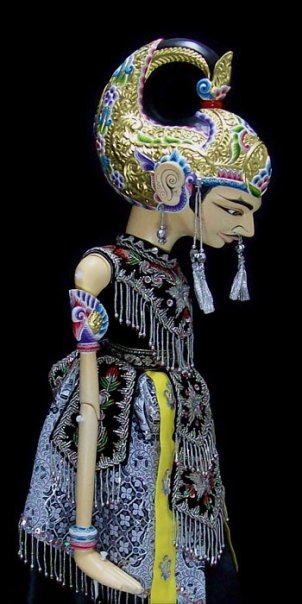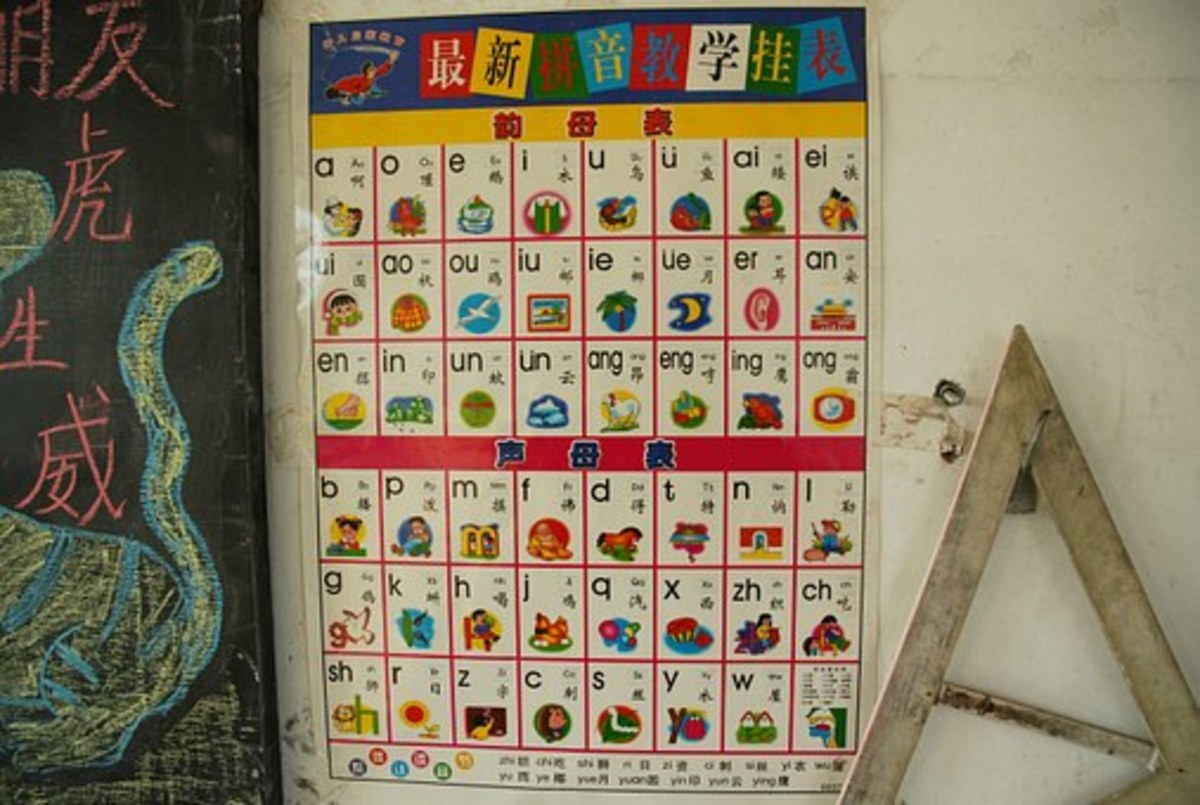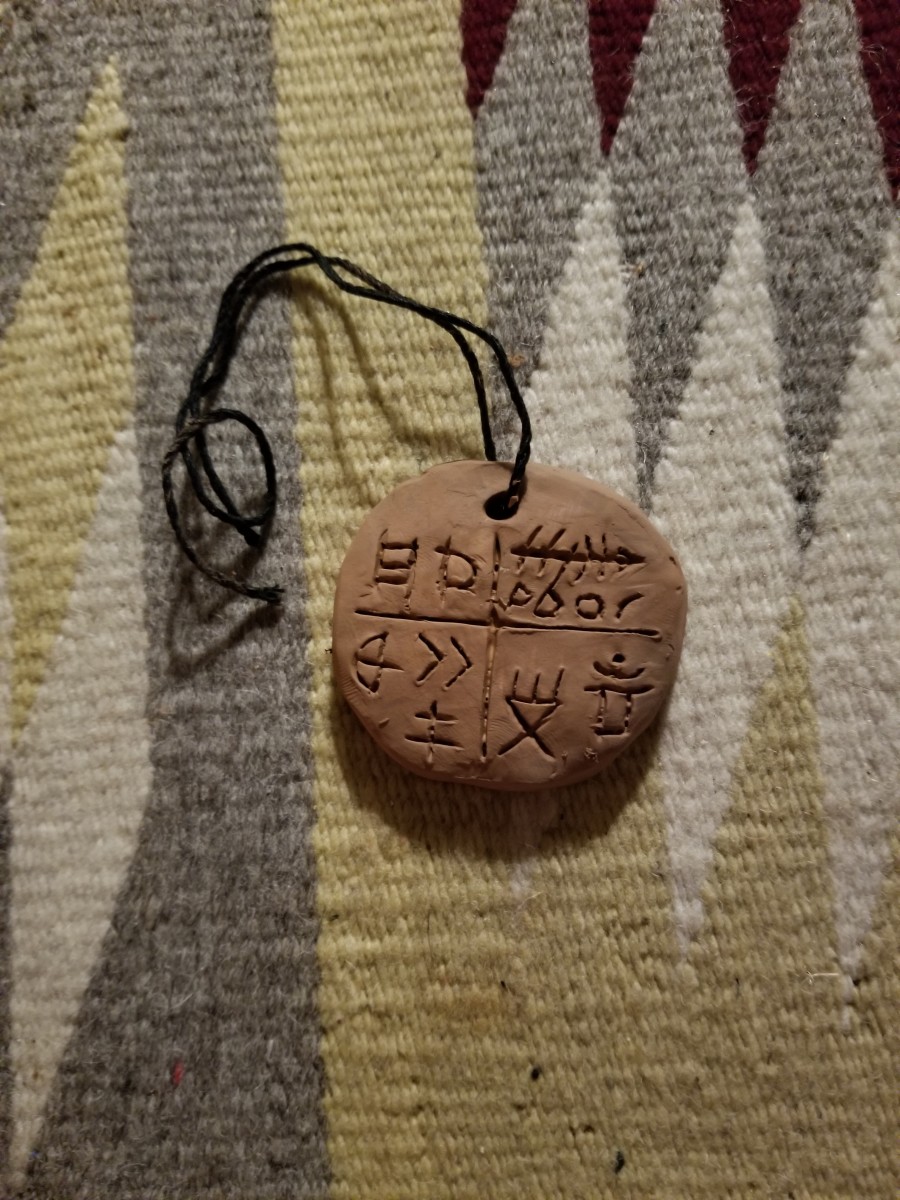Sundanese Language
Map of Madurese distribution (in green). The homeland of the Madurese is the Madura island, the north eastern of Java
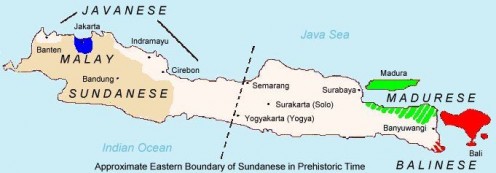
Asmarandana-sunda
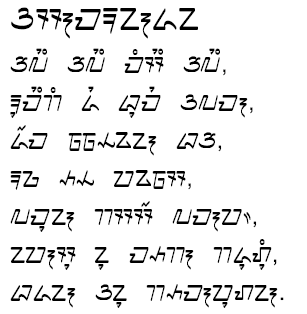
Old Sundanese script
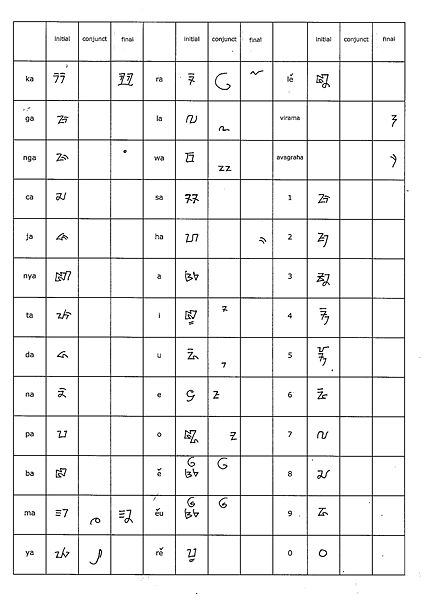
Comparison of the form letter
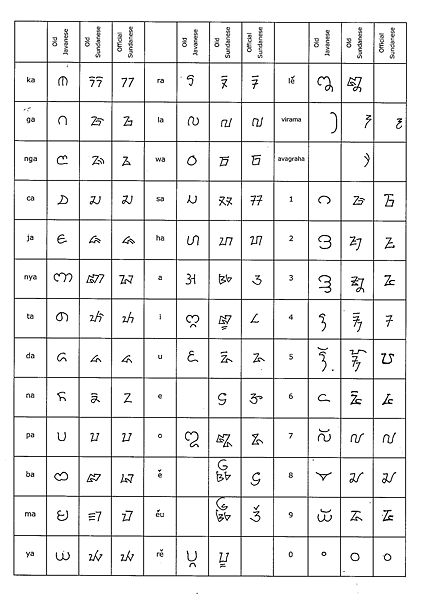
What words Sundanese
Wayang Golek Sunda. Bahasa Sunda with English and Bahasa Indonesia subtitles.
Sudanese food: Moolah Roab
Sundanese music :Kacapi Indung Cianjuran . Liwung Jaya song
Jaipongan. West Java (Sunda)
Introduction Sundanese Language
Saya Urang Abdi/sim kuring/pribados
Sundanese is one of the major languages of Indonesia, spoken in western Java by about 25 million people. It is a member of the Indonesian branch of the Malayo-Polynesian family of languages. Sundanese is written in both the Javanese script and the Roman alphabet shown below. Sudanese is spoken/used in Indonesia, Language Family:
- Family: Malayo-Polynesian(Austronesian)
- Subgroup: Indonesian
Sundanese (Bahasa Sunda, in Sundanese script ᮘᮞ ᮞᮥᮔ᮪ᮓ, literally "language of Sunda") is the language of about 27 million people from the western third of Java or about 15% of the Indonesian population. It appears to be most closely related to Madurese and Malay, and more distantly related to Javanese. It has several types, conventionally described according to the locations of the people: Banten, Bogor,Priangan (Bandung and its surroundings), Ciamis, Kuningan, and Cirebon. Priangan, which cover the most area of Sundaland (Tatar Pasundan in Sundanese), is the main and most-spoken type of Sundanese language taught in elementary till junior-high schools (equivalent to ninth-year school grade) in West Java and Banten Province.
Sundanese can be written in different writing systems, the Sundanese script (Aksara Sunda) and Pegon in historical times, and in modern times the Latin alphabet.Sundanese orthography is highly phonetic (see also Sundanese script). There are five pure vowel sounds: a /ɑ/, é /ɛ/, i /i/, o /ɔ/, u /ʊ/, and two neutral vowels; e /ə/, and eu /ɤ/. The consonantal phonemes (18—but see below) are transcribed with the letters p, b, t, d, k, g, c (pronounced /tʃ/), j, h, ng (/ŋ/, occurs initially), ny /ɳ/, m, n, s /s/, w, l, r (trilled or flapped), and y /j/. Other consonants that originally appear in Indonesian loanwords mostly transferred into native consonants: f → p, v → p, sy → s, sh → s, z -> j, and kh /x/ → h.
Based on the statement above, it is clear that the Sundanese language has only 16 consonants, there are three consonants /f, v, z/ which exist in Sundanese as a result of borrowing words, but naturally they are not Sundanese consonants.
Furthermore, Sudaryat does not mention the phonemes /w, j/ as semi vowels, although as vowels, /w, j/ function as a glide sound between two different vowels, as in the words:
- Kueh - /ku w eh/
- Muih - /mu w ih/
- Bear - /be A ar/
- Miang - Mi j an/
Phonemes /w/ and /j/ function as glide sounds between two different vowels as in the words:
- wa - rung
- wa - yang
- ba - wang
- ha - yang
- ku - ya
Basic grammar >> Root word >> Root verb
English || Sundanese (normal) || Sundanese (polite)
- eat ==> dahar ==> tuang (for other) ==> neda (for myself)
- drink ==> inum ==> leueut
- write ==> tulis ==> serat
- read ==> maca ==> maos
- forget ==> poho ==> hilap
- remember ==> inget ==> emut
- sit ==> diuk ==> calik
- stand ==> tangtung ==> adeg
- walk ==> leumpang ==> papah
Most of active form in sundanese verb are in their root verb like 'diuk' or 'dahar'. Some other depend on first phonem in root verb:
- first phoneme in 'd' is eliminated and changed to prefix 'nga' like in 'ngadahar'
- first phoneme in 'i' is eliminated and changed to prefix 'ng' like in 'nginum'
- first phoneme in 'b' is eliminated and changed to prefix 'm' like in 'maca'
For Negation, (to be written). "Abdi henteu acan neda". (I have not eaten yet.) Explanation: From the above example, "henteu" is used for negative term. "Buku abdi mah sanes nu ieu". (My book is not this one.) Explanation: From the above example, "sanes" is used for negative term. Question : (to be written) >> Dupi -(question), example: Polite-
- Dupi Bapa aya di bumi? (is your father at home?)
- Dupi bumi di palih mana? (where do you live?)
To Passive form. (to be written.) "Buku dibantun ku abdi". (The book is brought by me.) Explanation: "dibantun" (to be brought/passive) and "ngabantun" (active) The other examples: "Pulpen ditambut ku abdi". (The pen is borrowed by me.) "Soal ieu dikerjakeun ku abdi". (This problem is done by me.). And Adjectives (to be written). example: teuas (hard), tiis (cool), hipu (soft), lada (hot, usually for foods), haneut (warm), etc.
Prepositions >> Place
English || Sundanese (normal) || Sundanese (polite)
- above ==> diluhureun ==> diluhureun
- behind ==> ditukangeun ==> dipengkereun
- under ==> dihandapeun ==> dihandapeun
- inside ==> di jero ==> di lebet
- outside ==> di luar ==> di luar
- between ==> di antara ==> di antawis
- and ==> jeung ==> sareng
- front ==> hareup ==> payun
- back ==> tukang ==> pengker
Prepositions >> Time
English || Sundanese (normal) || Sundanese (polite)
- before ==> saacan ==> sateuacan
- after ==> sanggeus ==> saparantos
- during ==> basa ==> nalika
- past ==> baheula ==> kapungkur
Prepositions >> Miscellaneous
English || Sundanese (normal) || Sundanese (polite)
- from ==> tina ==> tina
- for ==> jang ==> kanggo
- There ==> Aya ==> Nyondong
- No ==> Embung ==> Alim
- Me ==> Urang Abdi/sim ==> kuring/pribados
Script Ngalagena
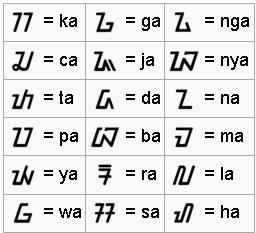
Rarangkén the above letter
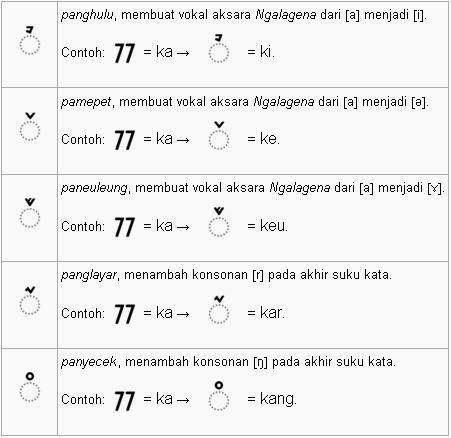
Rarangkén under a letter
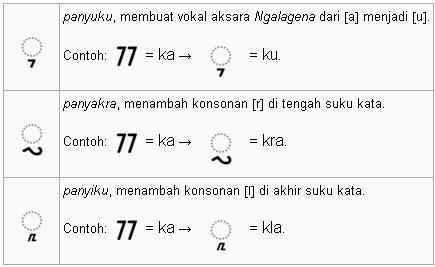
Rarangkén parallel letter
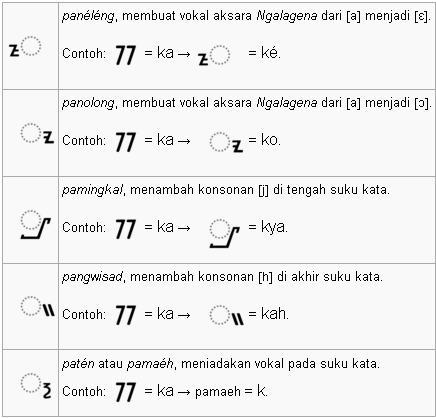
Numerical of Sundanese Script
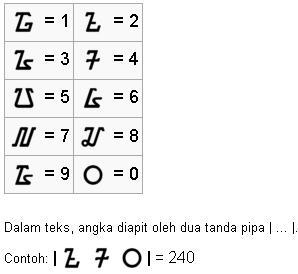
Introduction Sundanese Script
Sundanese Script Kuna is script growing in West Java in XIV-XVIII Century which was originally used to write the Sundanese language Kuna. Sundanese script Kuna is the development of the script Pallawa modifications to achieve better use of his trademark as papyrus scrolls in the XVI century. There are at least four types of script that bears the name of the Sundanese script, that script Sunda Kuna, Cacarakan Sundanese script, script Pegon Sundanese, Sundanese and Literacy Baku. Of the four types of Sundanese script, the script Sunda Kuna and the script Sunda Baku can be called a similar but different. Sundanese script Kuna is a modification of Baku Old Sundanese script that has been adjusted in such a way that can be used to write the Sundanese language contemporary. These modifications include the addition of letters (eg letter va and fa), a reduction in the letter (eg letter re pepet and le pepet), and changes in the form of letters (eg letter na and ma).
Baku Sundanese script writing system is an adjustment results Sunda Kuna script used to write the Sundanese language contemporary. Baku Today Sundanese script also commonly referred to as the Sunda Script. As disclosed above, the Baku Sunda script is the result of adjustments Sunda Kuna alphabet used to write the Sundanese language contemporary. These adjustments are based on the guidelines include the following:
- shape refers to the Old Sundanese script so that its authenticity can be maintained,
- a simple form to be easily written,
- the writing system based on the separation of word for word,
- spelling refers to the latest Sundanese for readability.
In practice, such adjustments include the addition of letters (eg letter va and fa), a reduction in the letter (eg letter re pepet and le pepet), and changes in the form of letters (eg letter na and ma). At present, the Sundanese script using Latin punctuation. For example: commas, periods, semicolons, colons, exclamation mark, question mark, quotation marks, parentheses, brackets, etc..
Sundanese script has a pedigree ranging from the Proto-Sinaitic alphabet ==> Font Phoenicians ==> Aramaic Letter ==> Brahmi ==> Pallawa ==> Old Kawi Script ==> Old Sundanese script ==> Script Sunda. This script can be said to have keserumpunan with Balinese script, Batak, Baybayin, Buhid, Hanuno'o, Lontara, Ancient Sundanese, Rencong, and Rejang.
Indonesian traditional music from West Java: Rihanna "Umbrella" - Angklung/Bamboo Version
Indonesian traditional music from West Java: gamelan sunda
Mission Impossible OST Angklung
Automatic Translation Software Sundanese from Bahasa
- Loka Tarjamah Otomatis Indonsia - Sunda (ku: Dian Tresna Nugraha)
Automatic Translation Software Sundanese from Bahasa by Dian Tresna Nugraha
Conversion of the Latin script - Script Sunda
- Konversi Aksara Latin - Aksara Sunda
Conversion of the Latin script - Script Sunda. Attention: INSTALL Sundanese Unicode fonts
Sundanese-Indonesian and Indonesian-Sundanese Dictionary
- Sundanese-Indonesian and Indonesian-Sundanese Dictionary
Dictionary Sundanese-Indonesia Indonesia-Sunda complete online. Just type your search in the box below. Its definition will appear automatically.
Lotek: Gado gado’s Sundanese brother
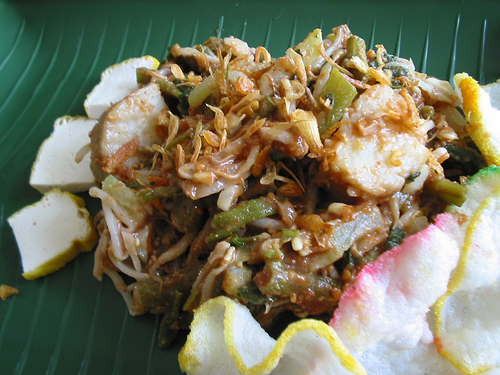
Sudanese food: Tamiah
Indonesian traditional music from West Java: kecapi suling, Ayun Ambing
Sundanese Food Recipes: Lotek
A traditional Sundanese vegetable dish that is both delicious and nutritious goes by the name Lotek . It basically consists of several vegetables such as tahu (tofu), cole, kangkung (waterspinach) and taugé (beansprouts). It is added with a spicy peanut sauce and topped with krupuk. Lotek is usually eaten with steamed rice or lontong , sticky cubes of rice that are neutral in taste thus complementing the spiciness.
Material:
- Drained watercress
- Long beans cut into pieces
- Pumpkin jipang chopped
- Toge
- Chopped cucumber
Peanut sauce:
- 7 tablespoons peanut
- 2 whole garlic fried
- 8 cayenne pepper
- 1-1/2 teaspoons salt
- 1-1/2 teaspoons shrimp paste cooked
- 5 teaspoons melted brown sugar + a little water
- 1 tablespoon tamarind liquid
Complement:
- Fried onions
- Crackers
Method:
- Steamed or boiled vegetables for a while (except cucumbers) until cooked.
- Take care not to get too wilted.
- Lift, then flush with cold water. Drain.
- Prepare all the vegetables on a serving plate.
- Sprinkle with peanut sauce.
- Then sprinkle with fried onions and crackers.
Note:
Lotek can be served with rice cake or rice.
Source: Selera Nusantara
Do you know the character of Sunda is this? If not then you are not familiar soil of West Java Indonesia.
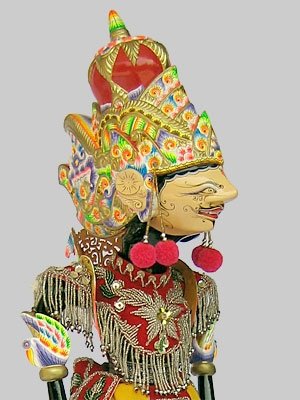
Arjuna is The Third Pandawa. Its called The Middle of Pandawa
